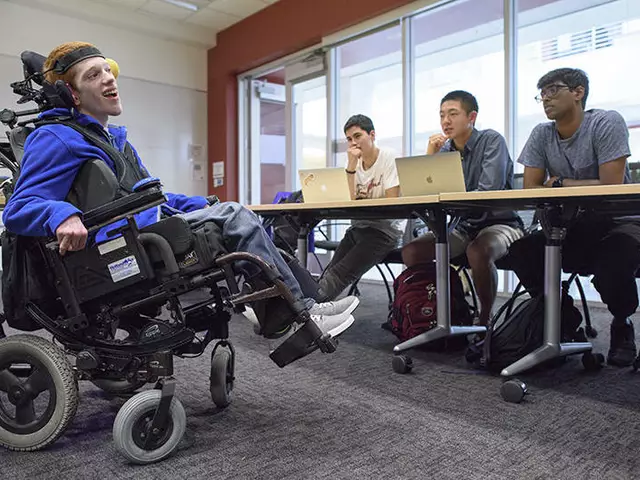OnePlus 15 Launches Globally Nov. 13, 2025, With Strategic Holiday Push Against Samsung

On November 13, 2025, OnePlus stunned the smartphone world by launching the OnePlus 15 simultaneously across the U.S., UK, and Europe — a radical departure from its usual staggered rollout. The move wasn’t just logistical; it was a direct challenge to Samsung, whose next Galaxy flagship, the S26, won’t arrive until late January 2026. By carving out the holiday shopping window with no major competitor in sight, OnePlus didn’t just launch a phone — it seized a moment.
A New Chapter for OnePlus Launches
For years, OnePlus fans complained about the gap between China’s debut and global availability. The OnePlus 15 changed that. With a Debayan Roy-backed leak confirming the specs just days before, and Gadget Hacks and Android Central reporting the launch simultaneously, the company signaled it was done playing catch-up. The phone runs OxygenOS 16 on Android 16, packed with Plus Mind and Gemini-integrated Mind Space — features meant to make multitasking feel seamless. But the real headline? A 7,300mAh battery. That’s 2,300mAh more than the Samsung Galaxy S25 Ultra, and it’s not a gimmick — it’s a statement.Yet confusion followed. While Gadget Hacks declared U.S. availability, Android Central insisted the device launched “everywhere but the US.” The truth? It’s complicated. The phone is officially available through OnePlus’s own store and select carriers, but without a major partnership like the old T-Mobile deal, penetration in North America remains thin. As Android Police bluntly put it: “The OnePlus 15 is the best smartphone you won’t buy — again.”
Specs That Shine — And Some That Sting
The OnePlus 15 comes with Qualcomm’s Snapdragon 8 Elite Gen 5, three 50MP cameras powered by OnePlus’s DetailMax imaging engine, and a 165Hz AMOLED display. On paper, it’s a beast. But here’s the twist: consumers aren’t buying it. GSM Arena’s Peter noted that despite its $1,000 price tag — matching the Samsung Galaxy S25 Ultra — the OnePlus 15 feels like a step back from the OnePlus 13. The design is heavier. The charging speed? Slower. The software? More bloated.“The OnePlus 15 costs about as much as a Samsung Galaxy S25 Ultra right now,” Peter wrote. “Sure, it has the newer chipset — but the Snapdragon 8 Elite Gen 5 clearly ate up a lot of the budget.” And that’s the problem. OnePlus spent its entire margin on raw power, leaving little for the little things: haptics, speakers, camera tuning. Meanwhile, the Realme GT 8 Pro arrived with a 200MP periscope lens and a 50MP ultra-wide — upgrades the OnePlus 15 desperately needed but didn’t deliver.

The 15R: A Lifeline or a Cop-Out?
Enter the OnePlus 15R, set to launch on December 17, 2025. According to tipster Debayan Roy, it’ll ditch the Elite chip for the standard Snapdragon 8 Gen 5 — still powerful, but less power-hungry. It’ll have dual 50MP cameras, a 8,000mAh battery (yes, bigger than the 15), and a 165Hz screen. It’s not a new phone — it’s a rebrand of the OnePlus Ace 6T, a model already spotted in China. PhoneArena suggests this isn’t innovation — it’s damage control.Why? Because the OnePlus 15 is already facing backlash. “People want to go back to the OnePlus 13 days,” said one user on Reddit, echoing a sentiment echoed across forums. The 13 had a perfect balance: flagship performance, clean software, and a $700 price. The 15? $1,000, with less polish. The 15R? It’s OnePlus’s attempt to win back the mid-premium crowd — the very segment it once dominated.
The Bigger Picture: OnePlus’s Identity Crisis
OnePlus used to be the anti-iPhone, the anti-Samsung. Fast, clean, affordable flagship. Now? It’s trying to be both. The OnePlus 15 is a luxury play. The OnePlus 15R is a value play. And the OnePlus Pad Go 2 and OnePlus Watch Lite — launching alongside the 15R — suggest a company trying to build an ecosystem, but without a clear anchor.Meanwhile, Samsung’s patience is paying off. By delaying the S26 until February 2026, they’re letting OnePlus burn through holiday hype — then swooping in with superior marketing, carrier deals, and brand loyalty. The real winner? Consumers. With two strong options in the same window, the market is finally forcing OnePlus to compete on more than just battery size.

What’s Next?
December 17 is the next big date. If the OnePlus 15R delivers on its promise — longer battery, better value, fewer compromises — it could salvage OnePlus’s reputation. But if it feels like a repackaged Ace 6T with a new name? The brand may never recover its former glory.OnePlus’s gamble was bold. But in tech, timing isn’t everything — it’s only half the battle. The other half? Delivering a product people actually want to buy.
Frequently Asked Questions
Why is the OnePlus 15 confusingly available in some countries but not others?
Despite official claims of global availability, the OnePlus 15 lacks major U.S. carrier partnerships since its T-Mobile deal ended. While it’s sold directly via OnePlus’s website and select retailers, widespread retail presence and carrier subsidies — key to U.S. adoption — are missing. This creates a perception gap, even when the phone is technically available.
How does the OnePlus 15’s battery compare to the Samsung Galaxy S25 Ultra?
The OnePlus 15 packs a 7,300mAh battery — 2,300mAh larger than the Galaxy S25 Ultra’s 5,000mAh. But battery size doesn’t equal longevity. The S25 Ultra’s more efficient chipset and software optimization often result in comparable all-day use. OnePlus’s larger battery compensates for its less optimized hardware, but at the cost of device weight and thickness.
Is the OnePlus 15R just a rebranded OnePlus Ace 6T?
Yes, according to tipster Debayan Roy and reports from PhoneArena. The OnePlus 15R shares the same Snapdragon 8 Gen 5 chipset, dual 50MP camera setup, and 8,000mAh battery as the Ace 6T, which launched in China in October. This suggests OnePlus is using regional naming to target different markets — a strategy that risks confusing consumers rather than clarifying its lineup.
Why are consumers comparing the OnePlus 15 to the OnePlus 13?
The OnePlus 13 offered flagship performance at a $700 price point with clean software and balanced hardware. The OnePlus 15, priced at $949, feels heavier, slower to charge, and more bloated — despite newer specs. Many users feel OnePlus sacrificed its core identity — value-driven performance — for premium pricing without matching polish, sparking nostalgia for the 13’s simplicity.
What’s the significance of the November 13 launch date?
By launching in mid-November, OnePlus avoided the crowded January-February flagship window dominated by Samsung and Apple. This gave it a six-week head start during peak holiday shopping, allowing it to capture early adopters before competitors arrived. It’s a smart tactical move — but only if the product can hold attention beyond the initial buzz.
Will the OnePlus 15R fix the brand’s U.S. problems?
Unlikely. The U.S. market is dominated by carrier subsidies, trade-in programs, and retail partnerships — none of which OnePlus has rebuilt since its T-Mobile deal ended. The 15R may appeal to budget-conscious buyers, but without a carrier presence, it won’t reach the mass market. OnePlus needs a partnership, not just a better spec sheet, to win back American consumers.
- November 24, 2025
- Danilo Freemont
- 0 Comments
- Permalink




